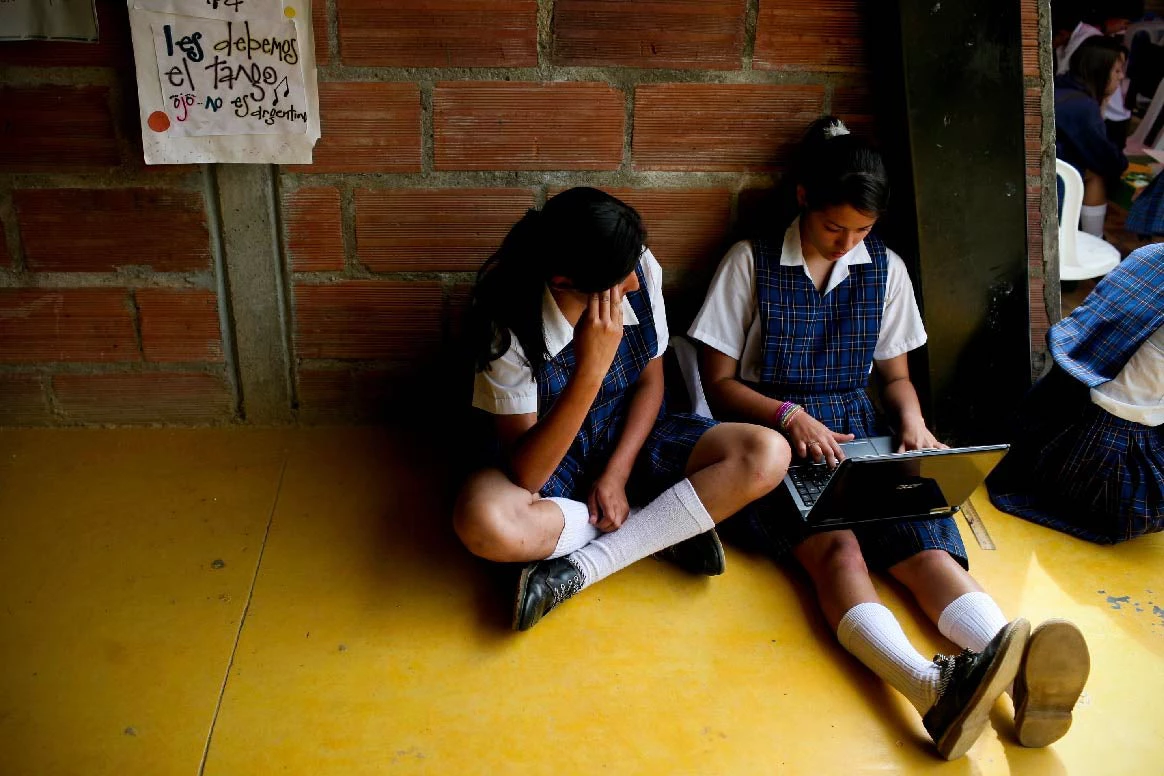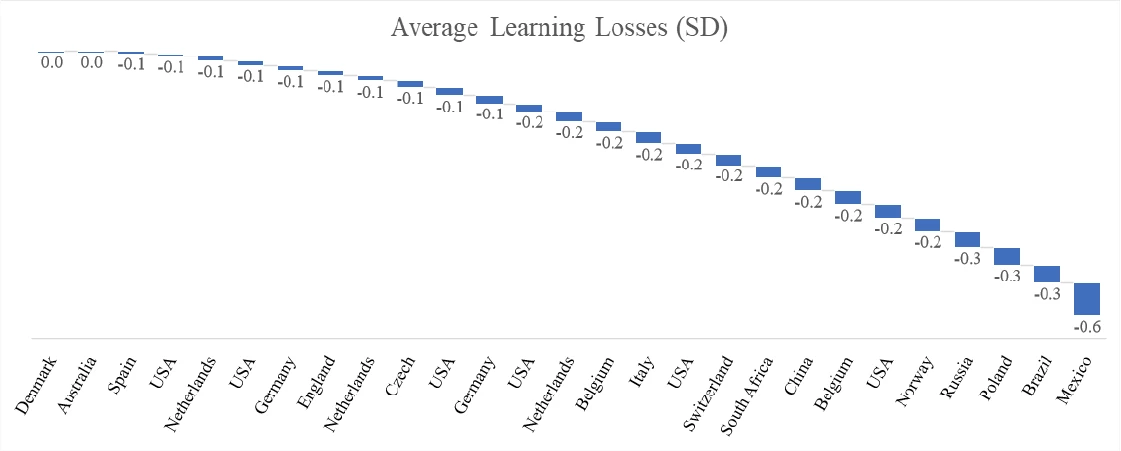 Students at San Jose Secondary School, a rural school in in La Ceja, Antioquía, Colombia. Photo: Charlotte Kesl / World Bank
Students at San Jose Secondary School, a rural school in in La Ceja, Antioquía, Colombia. Photo: Charlotte Kesl / World Bank
Almost 1.6 billion students across the world were affected by school closured because of the COVID-19 pandemic. Even short disruptions in a child’s schooling have significant negative effects on their learning and can be long-lasting. These losses may translate to greater long-term impacts, with the burden falling heaviest on the disadvantaged.
While some countries managed to limit the losses, recent research on the actual impact of COVID-19 on learning progress shows that school closures frequently have a large, persistent, and unequal effect on learning . Online education is an imperfect substitute for in-person learning, particularly for children from low-income families. Early systematic reviews based on limited data from high-income countries suggest large learning losses and increased learning inequality.
In our recent paper, we examined 35 rigorous studies from 20 countries which reveal three key issues:
-
Most studies (32) find evidence of learning loss. Of the 35 studies reporting learning loss, 27 reported findings in a comparable effect size format. Most studies found learning losses ranging from 0.25 to 0.12 standard deviations (SDs). In five studies, learning losses were even greater. The average learning loss across these studies is 0.17 standard deviations – which equates to over half a school year of learning loss.
-
The studies consistently find different levels of learning loss by student socio-economic status, past academic learning, and subject of learning. In our review, 20 studies examined learning loss by socio-economic status. Of these, 15 find greater learning loss among students or schools with lower socio-economic status, while 5 fail to find a statistically significant difference. Many studies have also found learning loss to be worse for students who had struggled academically prior to the pandemic. Of the studies that included this measure, 11 documented greater learning losses for students at lower levels of academic achievement, while 3 documented greater learning losses for students with greater past academic achievement.
-
The longer the schools remained closed, the greater were the learning losses. For the 19 countries for which we have robust learning loss data, average school closures were 15 weeks, leading to average learning losses of 0.18 standard deviations. Put another way, for every week that schools were closed, learning declined by 1.2 point, or 0.01 standard deviations, on average. Most of our robust data come from 12 European countries. Given similar starting conditions overall (such as GDP per capita, access to connectivity and devices), these countries provide compelling evidence that the pandemic-related school closures led to learning losses. In these European countries, average school closures were 11 weeks in duration, and average learning losses were 0.16 standard deviations. Therefore, for every week of school closure, learning losses were about 1.5 points, or 0.015 standard deviations, per month.
We present findings in terms of standard deviation change of the treatment (post-covid) group from the pre-covid control group. Following standard practice, we convert results presented in months of loss to standard deviations, with 1 school year of learning equal to 0.33 standard deviations. As Figure 1 shows, the first wave of COVID-19-induced lockdowns and school closures beginning in March 2020 resulted, on average, in students’ losing about one-third to a half years’ worth of learning. These learning losses may impact a student’s education trajectory, as the lost learning is likely to limit opportunities to advance to higher levels of schooling. There are also long-term future earnings losses associated with lost human capital, with students potentially losing trillions of dollars in future income.
Figure 1: Range of learning loss (in SDs) in the 27 studies reporting comparable effect sizes
Indeed, the longer that schools remained closed, the greater the learning losses. As Figure 2 shows, the more weeks that schools remained closed, the higher the average student learning losses (in standard deviations).
Figure 2: Length of school closures and average learning losses, by country
Our future research will focus on longer-term impacts on individuals’ education and labor market trajectories as well as productivity and economic development globally. There are signs that the impacts will get worse in the future. The inequality in learning between advantaged and disadvantaged groups is likely to grow, posing a significant challenge to ending extreme poverty and promoting shared prosperity .






Join the Conversation